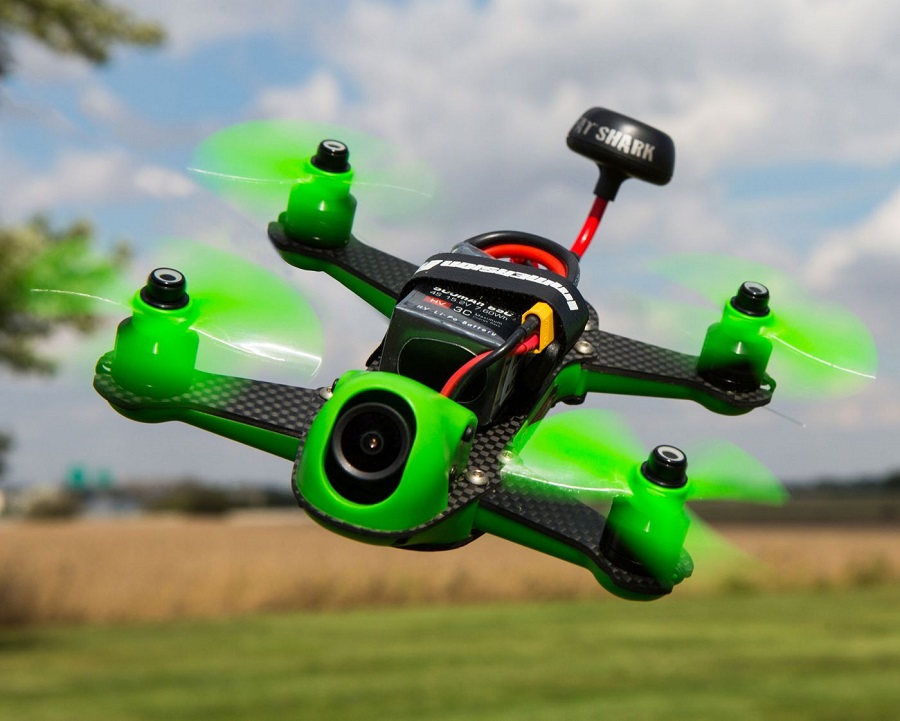Beginner racing drone In this article, I’ll share my personal story of the excitement that comes with FPV race drone racing, provide a brief outline of what you can expect to find within, and delve into the reasons why FPV racing drones have gained such popularity among beginners and enthusiasts alike.
I can still vividly recall my inaugural flight with an FPV racing drone. It was a radiant day, and I ventured to a nearby park with a friend who owned an FPV racing drone kit. He generously allowed me to don his goggles and take hold of the controller, and from that moment, I was utterly captivated by the world of FPV drone racing.
It felt as though I had taken to the skies, deftly navigating around trees and obstacles, with a surge of adrenaline coursing through my veins. I marveled at the racing drone’s remarkable speed and responsiveness, as well as the striking realism of the video feed. It was akin to being inside a high-speed video game, yet it was undeniably real.
From that day forward, I was resolute in my decision to acquire my own FPV racing drone kit and embark on the journey of learning to pilot it. Since then, I’ve dedicated myself to honing my skills through practice, participating in local races and events, and connecting with fellow FPV racing drone enthusiasts. It has evolved into one of my most cherished hobbies and passions, and I highly recommend it to anyone intrigued by the world of racing drones.

How Much Does an FPV Drone Cost?
Entering the world of FPV drones can indeed be comparable in cost to DJI drones, and it’s important to consider the various expenses involved. Here’s a rough breakdown of the costs associated with building a basic FPV drone and obtaining all the necessary equipment:
- Radio controller + Simulator: Typically ranging from $100 to $300.
- FPV Goggles: Prices can vary widely, spanning from $100 to $700.
- FPV Drone: Depending on quality and performance, you can expect to spend between $100 and $400.
- Batteries, chargers, and other accessories: Budget approximately $100 to $400 for these essentials.
If the prospect of building a drone from scratch feels overwhelming, there’s the option of purchasing complete ready-to-fly (RTF) bundles. These bundles come with all the necessary components to get started and are often more affordably priced. While they may offer lower quality and fewer features compared to custom builds, they can be an excellent starting point for newcomers to FPV flying.
In an upcoming section of this article, I will delve into the RTF option in greater detail and provide insights into some available packages.
Learning to fly an FPV drone in a simulator is a safe and cost-effective way to get started and improve your skills without damaging your real drone or causing injury. I strongly recommend getting some time in a simulator (ideally 10+ hours) before buying or building your first drone.
Simulators can teach you the basic controls of an FPV drone and help you develop the muscle memory your hands need. The physics of modern FPV simulators are incredibly realistic, making the transition from a simulator to a real FPV drone relatively seamless. Additionally, simulators allow you to practice advanced maneuvers and techniques, such as flips, rolls, and acrobatics, without the risk of crashing your drone.

Here is a list of FPV simulators
FPV sims are all excellent in their own ways. If you have a decent gaming PC, I’d probably recommend Liftoff and DRL, and if you have a low-spec PC, then Velocidrone is more likely to work better. Sims like Liftoff and Velocidrone have built-in tutorials to help you learn how to fly and learn Acro mode, which is what you really need.
Each FPV simulator has its own unique strengths. If you have a decent gaming PC, I’d recommend Liftoff and DRL. If you have a lower-spec PC, then Velocidrone might work better for you. Sims like Liftoff and Velocidrone include built-in tutorials to help you learn how to fly and master Acro mode, which is essential for FPV flying.
To use an FPV simulator, the first item you should purchase is a radio controller that supports FPV simulators. This means USB HID/joystick support that is plug-and-play, without the need for dongles or adapters.
All my radio recommendations support simulators, so you’ll be able to use them to fly your FPV drone later on.
Avoid using Xbox controllers or keyboards, as they won’t provide the same benefits. Using a proper radio controller will help you build muscle memory and ensure you get the most out of your training.
Key Features
The Flight Controller Right Nazgul5 V3 FPV Freestyle Drone boasts a number of impressive features that make it the best choice for enthusiasts looking for a high-performance and versatile drone.
- Versatile design: The flight Nazgul5 V3 FPV is designed for both racing and freestyle flights, providing a dynamic and exhilarating experience.
- Robust frame: The drone’s sturdy frame ensures durability and reliability, allowing it to withstand the rigors of intense flying sessions.
- Powerful flight controller: Equipped with high-performance motors, the Nazgul 5V 3 can reach impressive speeds while maintaining stability and control.
- User-friendly features: The Drone Learn offers easy-to-use features, making it accessible to pilots of all skill levels.
- Plug-and-play design: This design allows for quick assembly, enabling pilots to get their drones up and running in no time.
- Customizable settings: Pilots first can fine-tune the drone’s performance to suit their preferences and flying style.
- High-definition FPV camera: The high-quality camera captures stunning aerial footage, enhancing the immersive flight experience.
- Operating Temperature Range: -10° to 40° C (14° to 104° F)
- Max Wind Speed Resistance: 130 Km/H (Level 7)
- Receiver: DJI BNF, ELRS, or TBS Crossfire
Dimensions (L×W×H): 173×173×34±2 mm - Max Speed: 190 Km/h (Manual Mode)
learn4/5
Why it’s on my list?
The iFlight Nazgul5 V3 FPV Freestyle Drone secures its spot on my list due to its remarkable agility and adaptability. Specifically designed for freestyle flying and executing tricks, this drone promises an exciting experience for those who relish pushing the boundaries of their flying skills.
For those who yearn to explore the full extent of the iFlight Nazgul5 V3 FPV Freestyle Drone’s capabilities and seek an all-encompassing analysis, we have just the resources you need. Navigate to my comprehensive article for an extensive review of the iFlight Nazgul5 V3 FPV Freestyle Drone in 2023.
FPV Drone Glossary
As you embark on your FPV drone journey, you’ll encounter a unique vocabulary of drone terminology. But fear not, we’ve got you covered with our concise reference guide to drone terminology. Whether you’re deciphering the meaning of ‘FPV’ or distinguishing between ‘yaw’ and ‘pitch,’ this glossary is your compass for navigating the world of drones effortlessly.
Conclusion
Throughout this extensive FPV drone tutorial, we’ve explored vital subjects such as comprehending drone components, selecting the right equipment, either constructing or purchasing your inaugural FPV drone, and guidelines for flying with safety and proficiency. We’ve also delved into the diverse FPV systems and emphasized the significance of proper tuning and software configuration.
As you embark on your FPV expedition, remember that practice, patience, and a dedication to safety are paramount. You might want to kick things off by utilizing simulators and progressively honing your abilities. Never hesitate to seek assistance from the FPV community when needed. Stay abreast of the latest advancements in FPV technology, and most importantly, savor the incredible experience that FPV flying has to offer. Happy flying!


